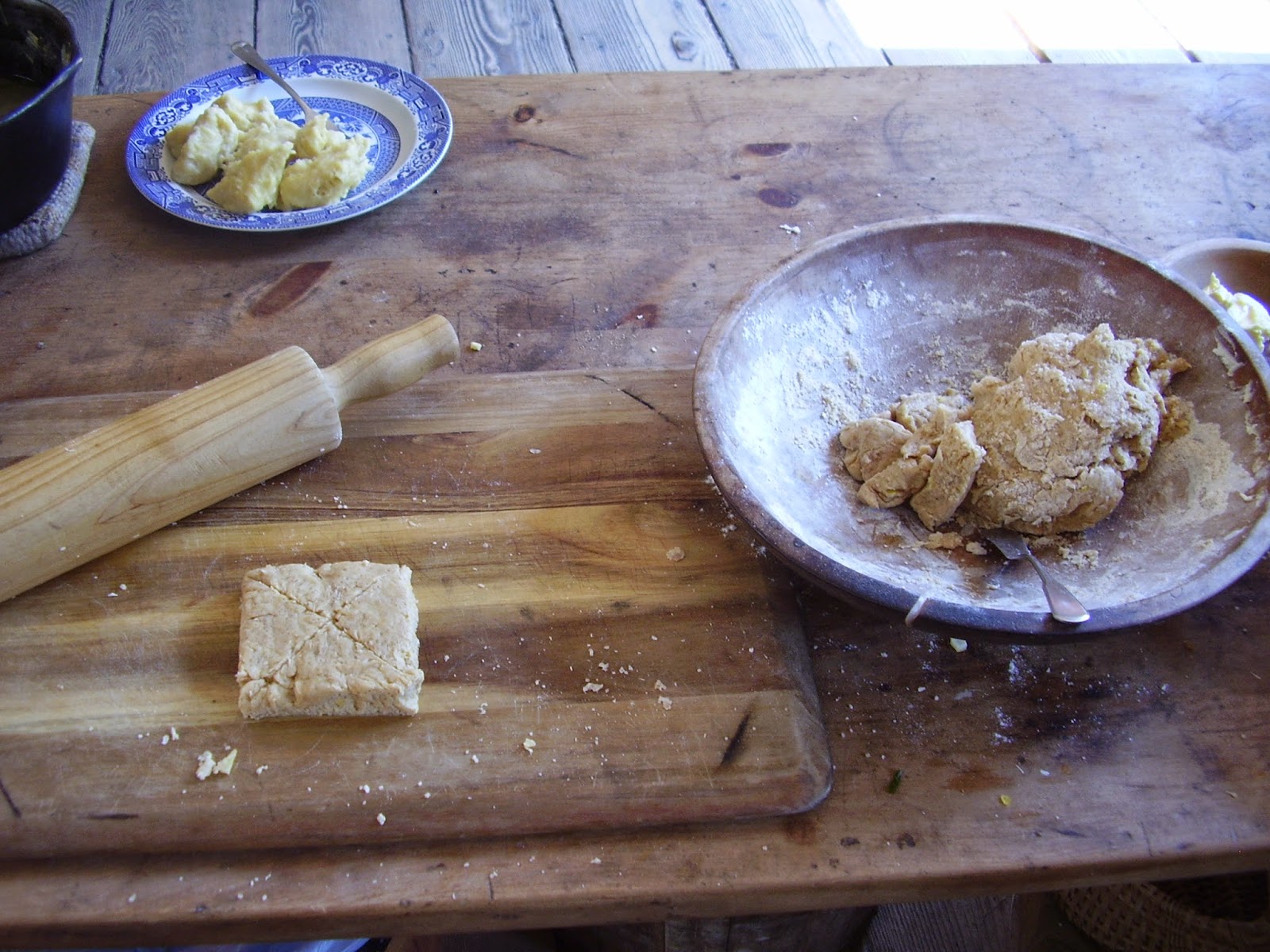I've been meaning to make a carpet bag for sometime--it's an accurate (even iconic) piece of luggage for the mid-century, and can hold a scary amount of items.
Materials:
1 yard of reproduction period carpet
1+ yard of lining material, depending on width (I used linen scraps; I've also heard of canvas and silk linings, and seen some reproductions lined in cotton prints)
1 frame (I used a 16" tubular purse frame, some people use dowels)
5 purse feet
Leather scraps, for bottom, welts, buckle straps, and handles
2 small buckles
A bottom board (I used a double thickness of pasteboard, a thin wood may be preferable).
Materials Sources:
I got the 16" frame from
Bits and Purses on etsy. The fabric was from a friend who has sources. I found the feet at
Weaving Works (75% off clearance during the moving sale!); the leather and linen were in my stash (previously from
S.R. Harris &
Our Fabric Stash, IIRC), and the pasteboard was from
Blick.
The closest thing I could find to an original pattern on-line were these instructions from
Scientific American (apparently from 1881). Also useful were the original carpetbag pictures at
The Graceful Lady (scroll to the bottom of the page), and these Sewing Academy threads:
carpetbag part suggestions,
carpetbag bottom.
The process:
Extrapolating from the size chart in the Sci. Am. instructions (which gave piece sizes for a 15" or 18" frame), I cut out the bag sides and gussets in scrap fabric. I sewed these together, and pinned the edges over the (open) frame to check the fit. I tried opening and closing the frame, and--being satisfied with the fit--used the scrap fabric as a pattern for cutting the lining and carpet pieces (two side pieces and two gusset pieces in each material). If I'd thought ahead, I would have cut the lining sides and bottom together as one long rectangle for easier assembly (this was the recommended procedure from the 19th century instructions).
I wanted a pocket inside the bag, to help keep track of small items, so I put one on one of the side lining pieces before going further.
Next, I sewed the carpet pieces together in a square: side to gusset to side to gusset (to the first side); for reinforcement, a leather 'welt' was stitched over each of the side/gusset seams. While the weight/structure they provide is nice, the process was tricky, and the extra seam bulk complicated later steps--I'd be tempted to skip this leather next time. The lining was prepared in the same way, sans welts. Measuring the opening gave me the bottom dimensions; I cut one piece of leather to this bottom measurement, and one piece of linen to make up the bottom inside lining. The leather was sewn to the carpet (right to right, on machine), and turned right-side-out. At this point, the bag was starting to take shape. The bottom lining was attached to the side/gusset lining in the same manner.
I cut a piece of pasteboard for the bottom foundation, using the dimensions of the leather bottom (shorter by 1/4" on each side). It ended up too big, anyway, so I trimmed it until it fit snugly, and then marked on it the positions for the 5 feet--one in the center, and one in each corner. I punched small holes on those points, and then glued the pasteboard onto the leather bottom. When dry, I used an awl to make small holes in the leather at the foot-points, and attached a foot through each (the feet have two prong on them, like brads, which are spread apart to secure the foot). I tapped each with a mallet, per the instructions, and that seemed to secure it nicely.
Being unsatisfied with the rigidity of the bottom portion, I cut a second piece of pasteboard and glued it over the first. The double-layer is more satisfactory, but next time I'd like to try a thin piece of wood.
Next, I pinned the bag upper to the open frame, lining up the corners and centering each piece. I folded the top of each side/gusset over the frame (measuring from the bottom to top along each side, so that the bag is uniform length), and stitched it down by hand. By using white thread and taking small outside stitches (through the white portion of the weave), the seam is nearly invisible on the outside.
To make the handles, I cut 2 strips of leather 11 1/8" x 1", rounded the edges, then folded in half (lengthwise, right sides out) and stitched along the edge, leaving 1.5" at either end. I dampened these with water, bent them into half-circle shapes, and let them dry.
To attach each handle, I placed is at the desired location near the top of the bag, and--using a leather needle with black silk thread--topstitched along the rounded end of the handle, through the carpetbag beneath. I should have done the buckles at this time as well, so that the wrong side of the sewing is hidden by the lining.
The lining was placed inside the bag (right side out), and the top excess folded down between the carpet and the lining material. This was pined in place, and handsewn close to the frame.
 |
| Frame and pieces |
 |
| Leather bottom with feet |
 |
| Shaping the handles |
 |
| Bag interior, with frame, sans lining |
 |
| Bag exterior, before adding handles |
 |
| Interior, showing bottom board |
 |
| Finished carpetbag, exterior |
 |
| Finished carpetbag, interior |



















